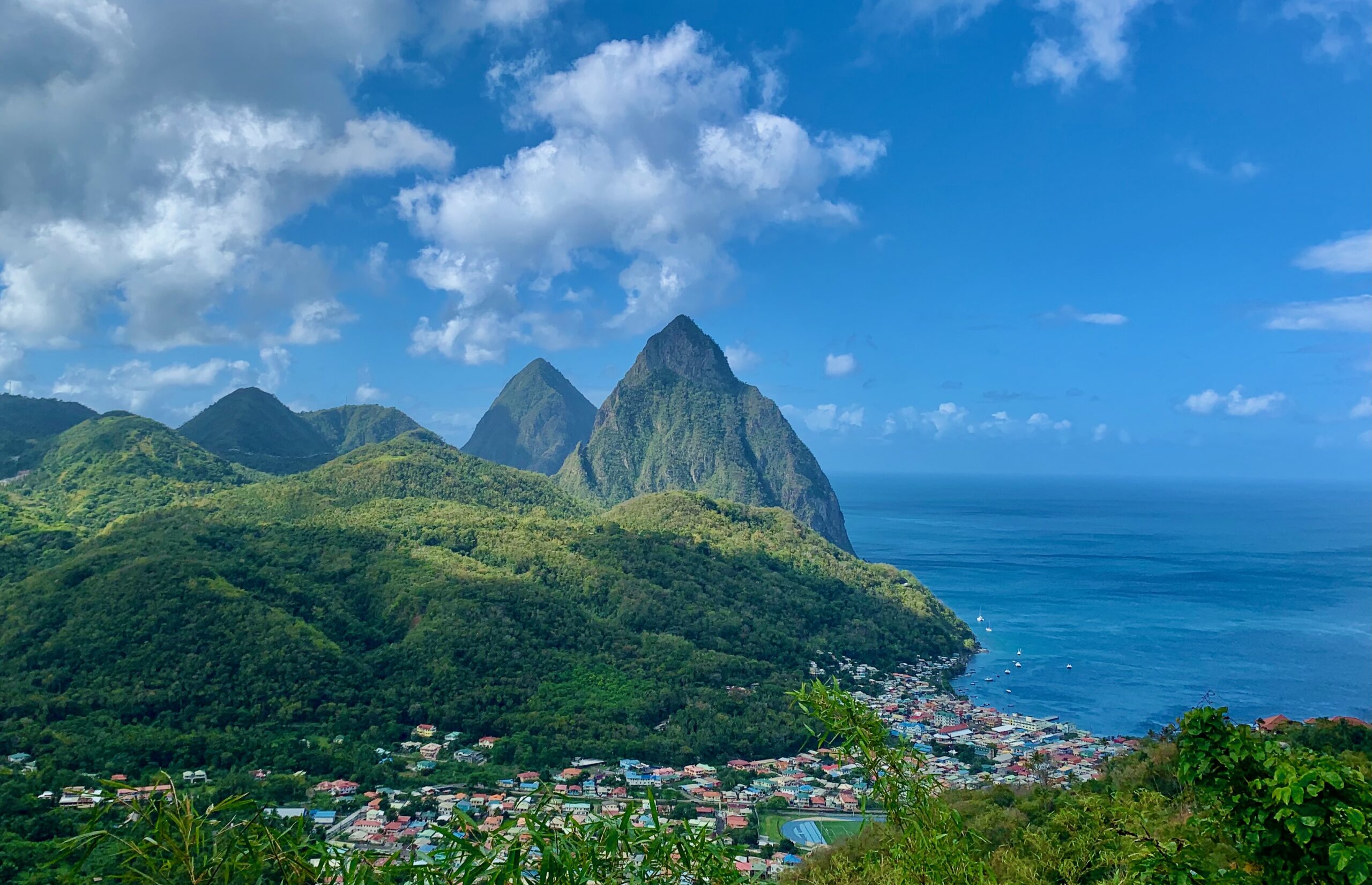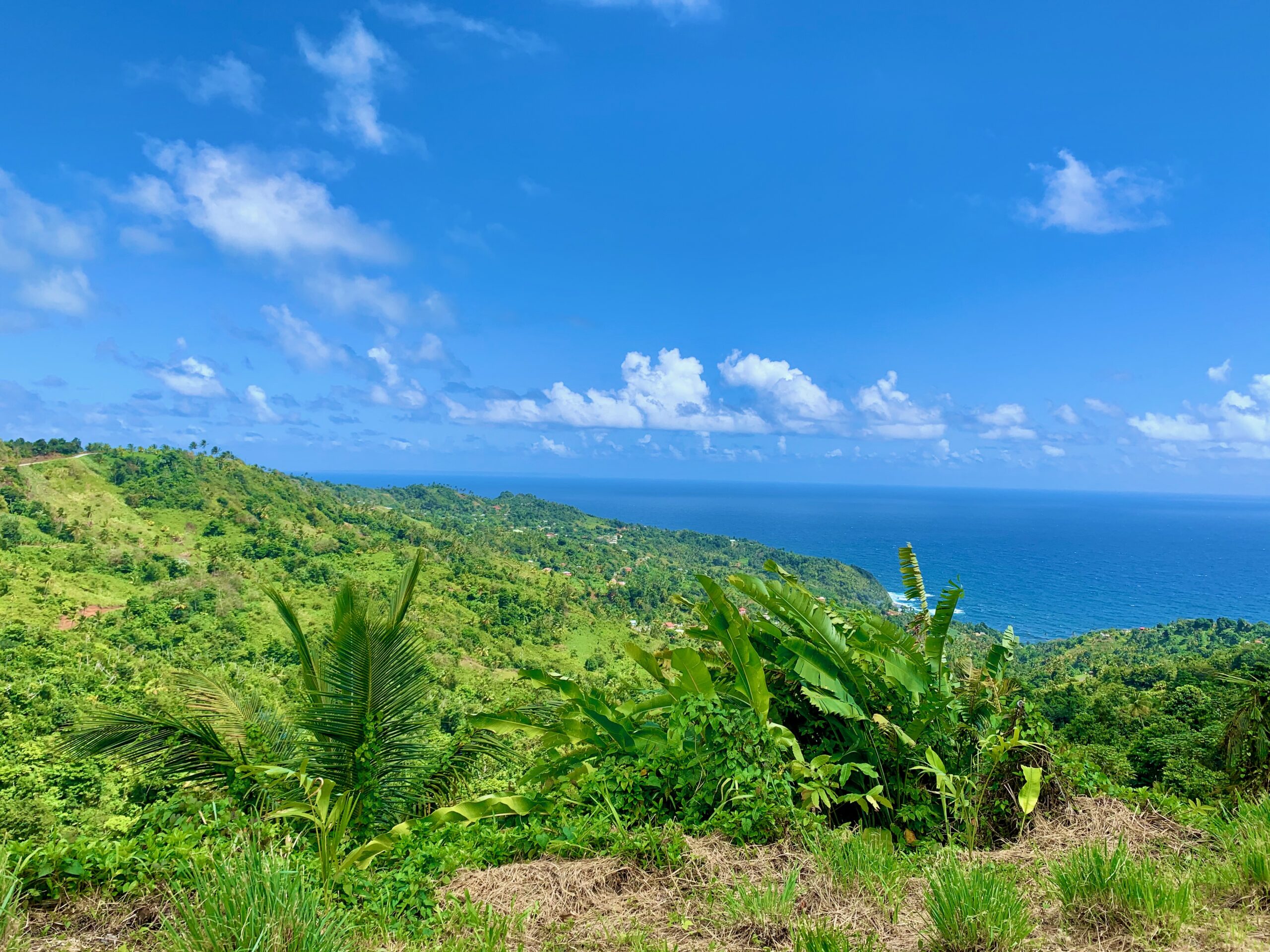
The wildness of Dominica envelops me before my feet even touch the ground.
Outside the window of a regional jet, curves of verdant jungle mountains surround, a cacophony of layered leaves twisting below like the curved backbone of a snake in movement and just out of reach. Propellers spin as we drop down in the open sky, and it couldn’t look less like we are about to land at the country’s international airport, but one small building and a narrow ribbon of tarmac in the distance break up the overlapping sea of green that stretches all the way to the deep blue of the ocean.
But descend we do and the plane comes to a stop offering the uninterrupted vista of an oceanfront view. Welcome to Dominica.
Dominica is not to be confused with the Dominican Republic. The former is a separate island 29 miles in length and located in the Lesser Antilles, a chain of volcanic islands that sit East in the Caribbean Sea.
The indigenous name for the island, Wai’tu kubuli, translates to “Tall in her Body,” a fitting description of the mountain terrain. The island’s current name has far less poetic origins. Christopher Columbus first made sight of the landmass on his second voyage to the New World and named it after the day of the week of the sighting – Sunday (Domingo in Italian).
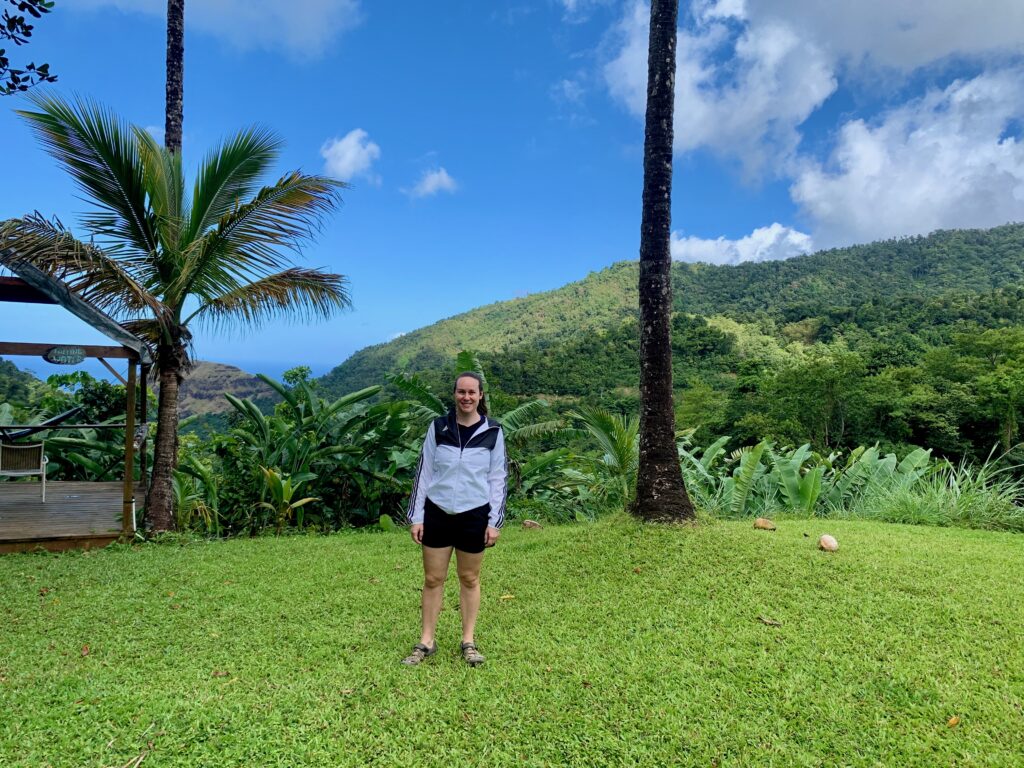
The mountains are the island’s power.
After the arrival of Europeans, the lack of gold made it undesirable to colonize with the same force as other islands in the Caribbean and the rugged terrain made it more challenging, providing an aid to the indigenous Kalinago, who managed to utilize the topography to mount a fierce resistance. The last remaining tribe of pre-Columbian Carib Indians have kept their culture alive through the centuries, settling in a territory on the eastern shore where they still live today and invite visitors to experience their customs.
For adventurous travelers looking for an escape that is truly off-the-beaten path, the mountains remain the island’s power today, preventing the type of mass infrastructure developments that have brought one all-inclusive-resort after the other to trendier neighboring islands. For context, prior to the pandemic, in 2019 Dominica welcomed 322,000 visitors. The Bahamas welcomed 7.2 million.
The heartbeat of Dominica is found in Roseau Valley, deep down a single lane road that leads with hairpin curves from the capitol city into a rainforest teeming with an abundance of natural wonders.
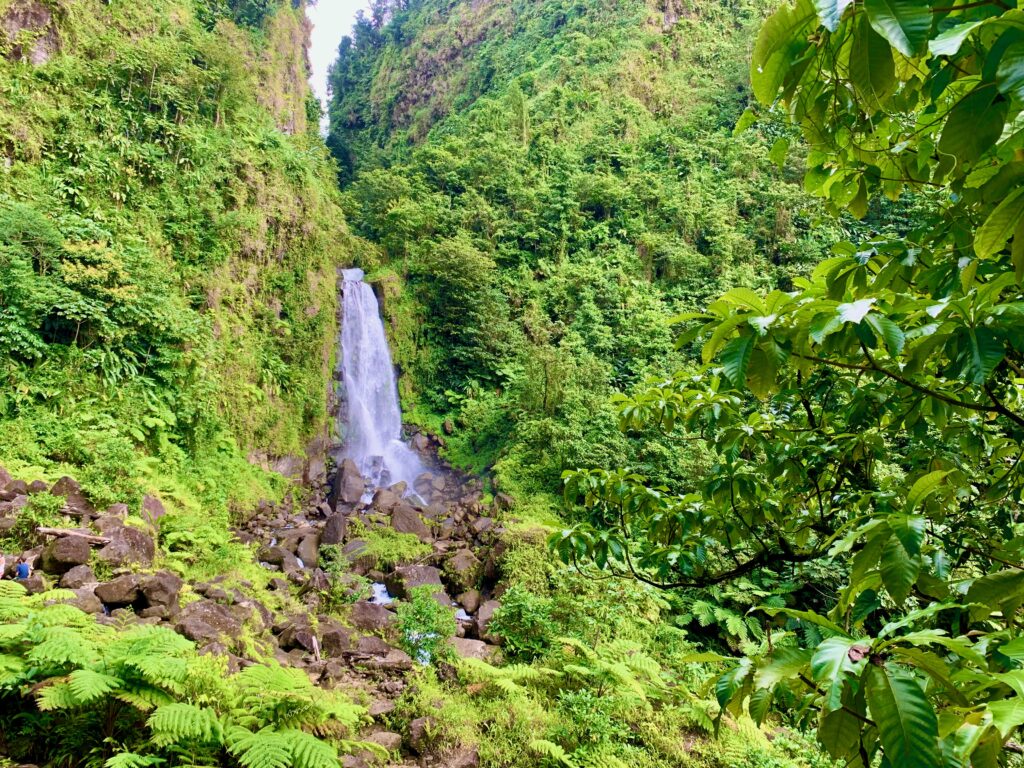
A UNESCO Heritage Site, Morne Trois Pitons National Park is home to five vegetation zones and natural sights that range from a boiling lake and emerald pool swimming hole to waterfalls. A 45-minute hike leads to Middleham Falls, one of the country’s highest waterfalls that makes most best of lists.
My favorite slice of the wild comes at Ti Tou Gorge. I sink into the swimming hole’s icy water and push past the discomfort, swimming through a narrow opening between two steep lava rock walls. At the end of a short swim a waterfall awaits. As I stand under the weight of the crushing water, I feel all sense of thought wash off me, the force of such power leaving no room for anything but awe.
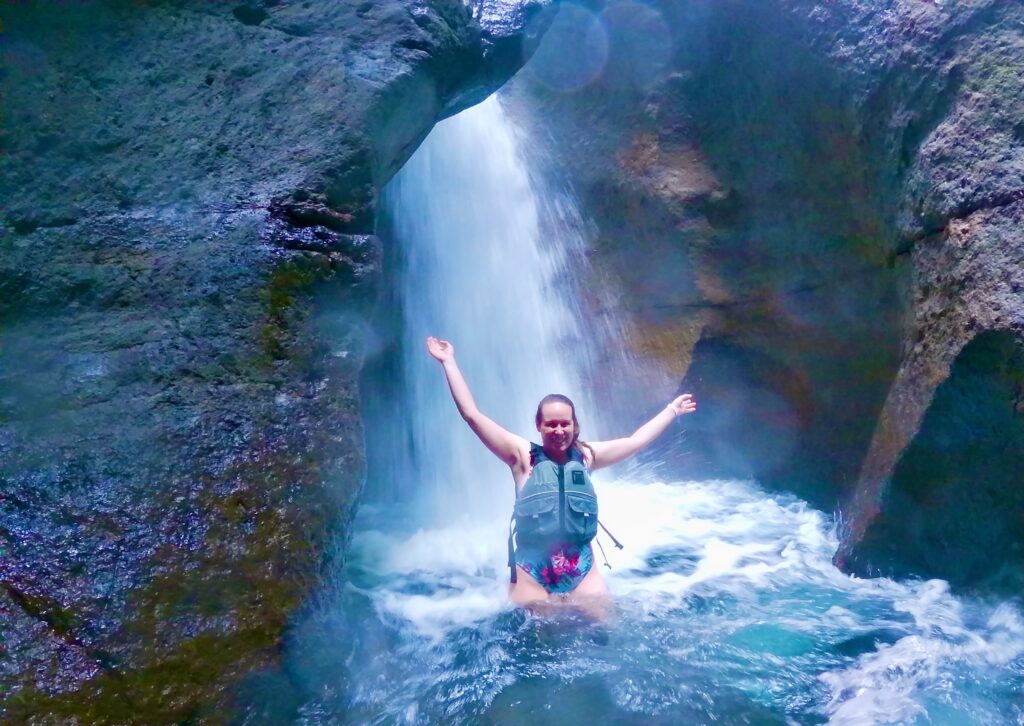
Outside the park there are several sights not to be missed. Trafalgar Falls delights with twin waterfalls that spray down from a steep rock face. Mom and pop bathing houses beckon in Wotten Waven, where hot sulfur springs bubble up from rivers, promising medicinal value while at the very least offering a soothing end to a day spent hiking.
In Dominica the nightlife is wild too. Back in Roseau, after the two cruise ships depart my small travel party is left to soak in sunset with locals at Hi-Rise Beach Restaurant. There is no beach in the city, but the imaginative establishment changes that with a floor of sand and the soft beats of reggae covers of Top 40 filling the breezy air. We feel just how small the island is when the tour guide who led us on our swim through the gorge bumps into us at the bar. Hugs are exchanged and for a brief few moments we become part of his community, regaling the details of our adventure with vivid pride.
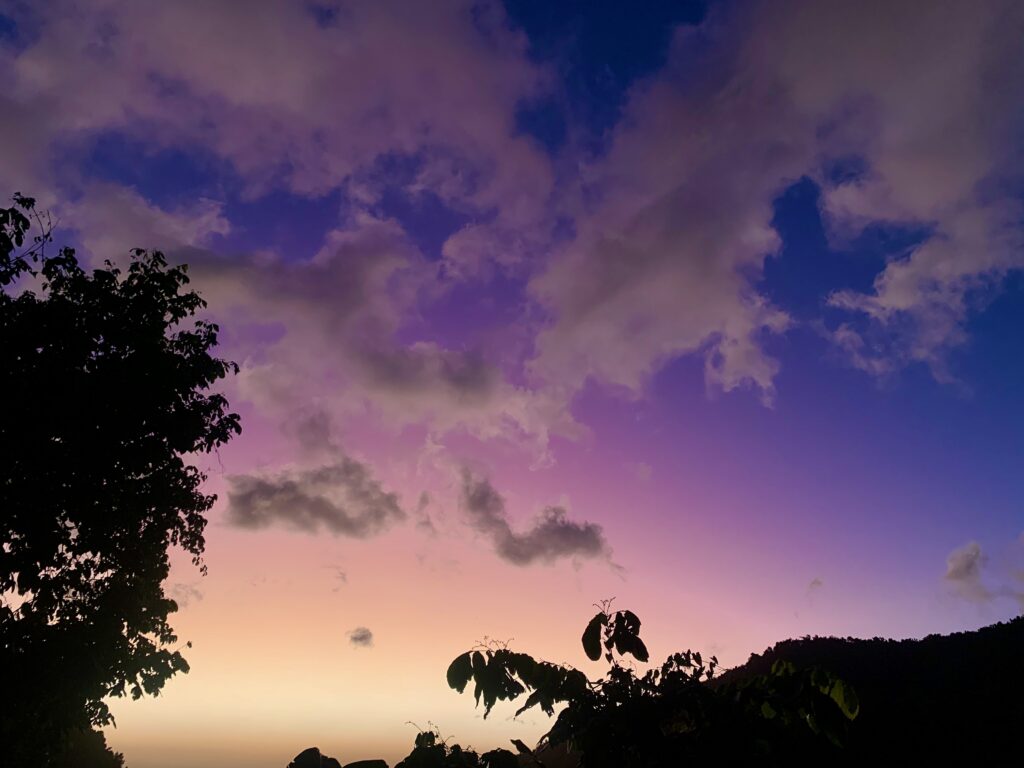
Our night out ends shortly after the last rays of sun sink beneath the sea. Martin, a friendly driver who has braved the roads for us, meets us for the drive back to our eco cottage for another evening of sleeping beneath the sway of leaves in the wind and pulses of intermittent rain.
The cottage sits at the end of a bumpy dirt road. Martin drives it backwards to avoid turning around at the narrow ending in the pitch black night. The car rocks back and forth as Ray Charles croons through Martin’s stereo. The set of headlights provide the only interruption to the deep dark of the night, illuminating an umbrella of branches that unfold and brush against the windshield. Dominica is wild indeed.



